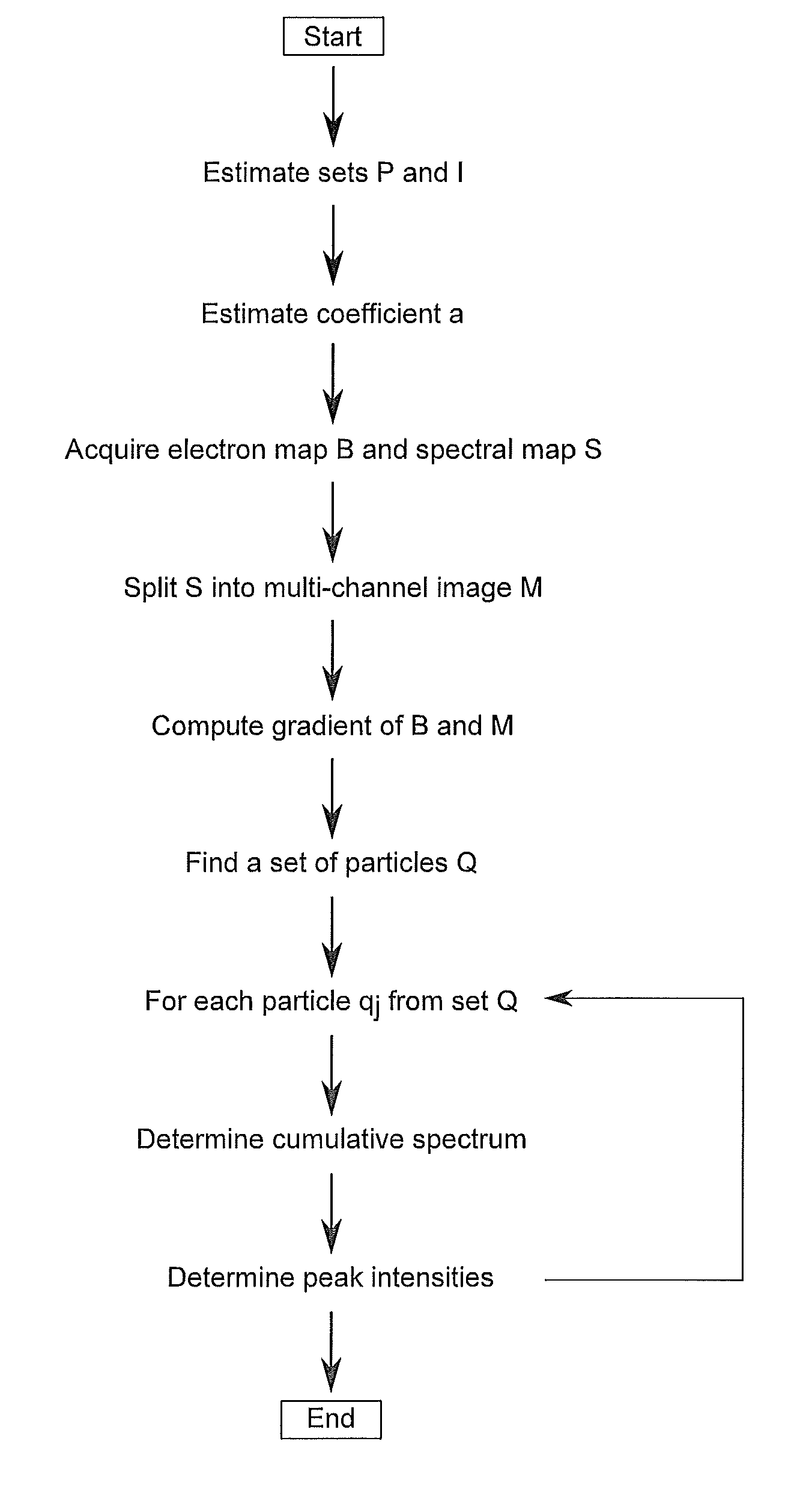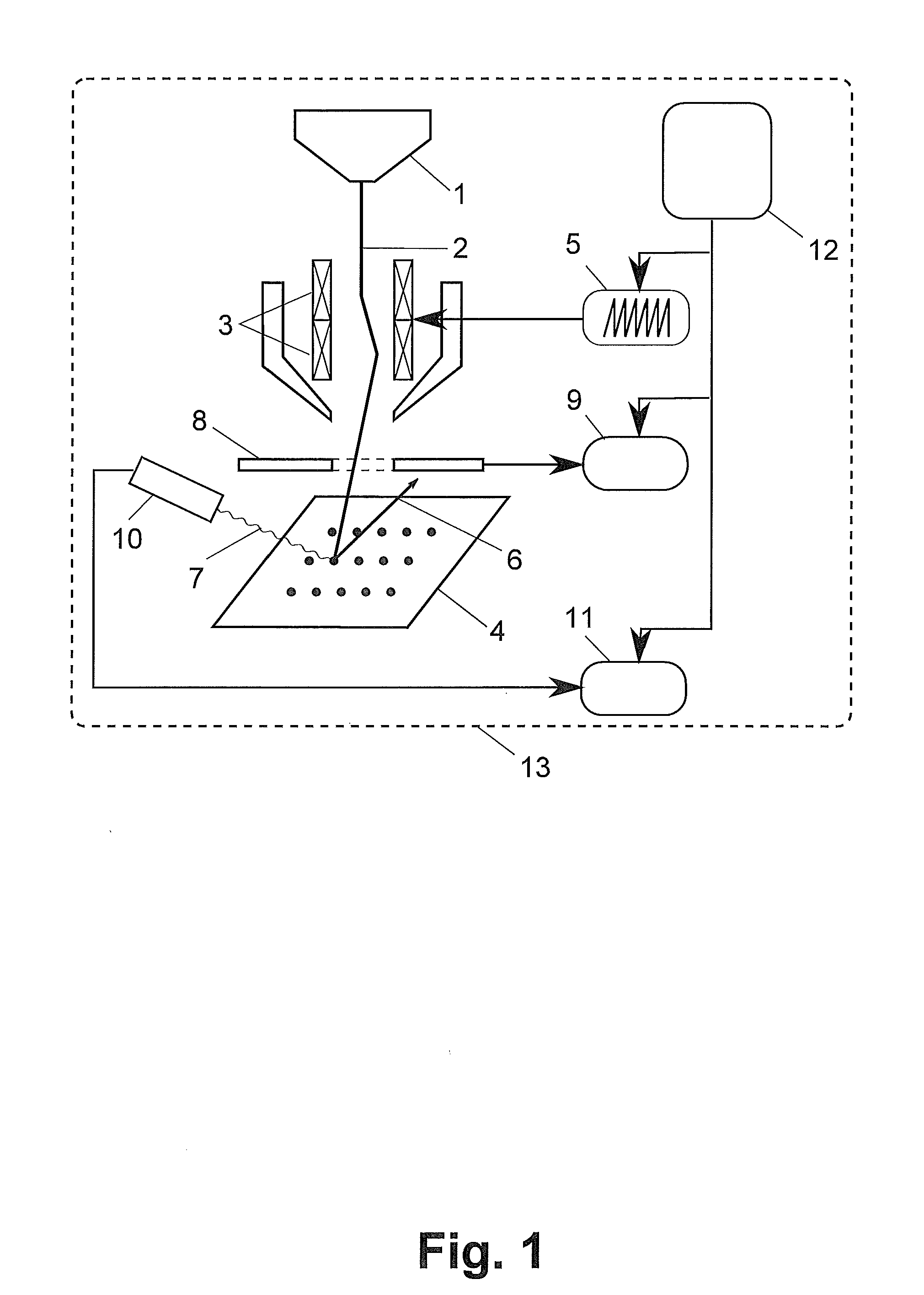Method and apparatus for material analysis by a focused electron beam using characteristic x-rays and back-scattered electrons
a technology of electron beam and electron beam, which is applied in the direction of chemical methods analysis, instruments, electric digital data processing, etc., can solve the problems of equipment not being able to detect a boundary, difficult to correct classification, and difficult to meet the precondition
- Summary
- Abstract
- Description
- Claims
- Application Information
AI Technical Summary
Benefits of technology
Problems solved by technology
Method used
Image
Examples
Embodiment Construction
[0034]A preferred embodiment of the work-flow of a method of material analysis by a focused electron beam in a scanning electron microscope is depicted in FIG. 5. The method is based on the well-known procedure where at first an expert estimate is used to specify an adequately large set P of chemical elements that might occur in the assayed sample and, for each element pi from the set P, an interval Ii of the energies of the X-ray photons is determined corresponding to one emission line of the element. Next, the focused electron beam is consecutively deflected to points on the assayed sample and, at the points, the intensity of the back-scattered electrons is established in order to create an electron map B and a histogram of the energies of the X-ray radiation emitted at the point is established in order to create a spectral map S. In the new method of the preferred embodiment, an X-ray map Mi is created for each element pi from the set P, where the values Mi(x, y) stored in the ma...
PUM
| Property | Measurement | Unit |
|---|---|---|
| electron beam | aaaaa | aaaaa |
| Mi | aaaaa | aaaaa |
| scanning electron microscope | aaaaa | aaaaa |
Abstract
Description
Claims
Application Information
 Login to View More
Login to View More - R&D
- Intellectual Property
- Life Sciences
- Materials
- Tech Scout
- Unparalleled Data Quality
- Higher Quality Content
- 60% Fewer Hallucinations
Browse by: Latest US Patents, China's latest patents, Technical Efficacy Thesaurus, Application Domain, Technology Topic, Popular Technical Reports.
© 2025 PatSnap. All rights reserved.Legal|Privacy policy|Modern Slavery Act Transparency Statement|Sitemap|About US| Contact US: help@patsnap.com



